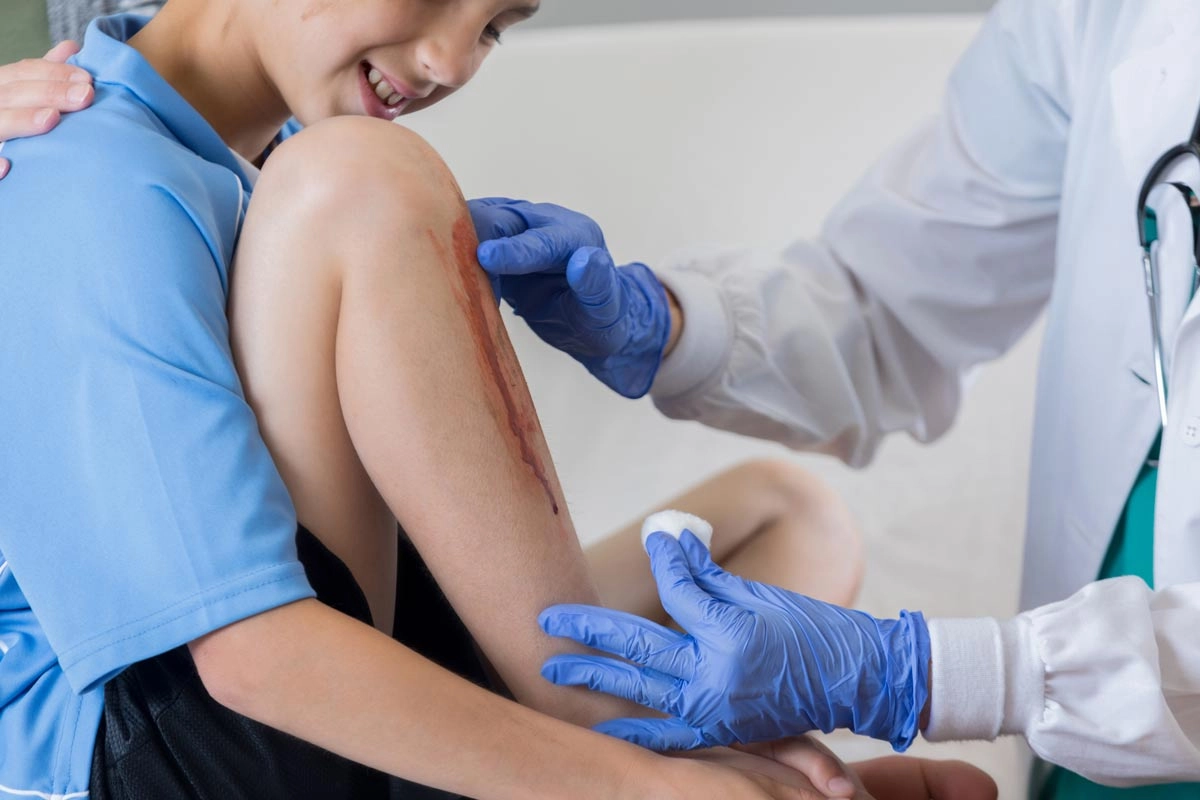LACERATIONS | WOUNDS | BLEEDING

Cuts are open wounds through the skin. Normally the skin is under slight, constant tension as it covers the body. A cut is a forceful injury to the skin. Many people accidentally cut themselves with household or work items, yard tools, or when operating machinery. Children often are cut during play and sports activities, or from falls while riding wheeled toys, such as bikes, scooters, or skateboards. Most cuts are minor and home treatment is usually all that is needed.
Cuts can be caused by:
Some types of cuts are more serious and need medical evaluation and treatment. These more serious cuts include:
Injury to the skin may also break small blood vessels under the skin and cause more swelling and bruising than you would expect.









